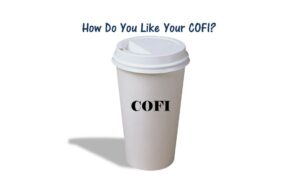We may soo n see some new innovations when it comes to the standard for all mortgages, the traditional 30-year fixed rate loan; a mortgage loan product that was developed back during the Great Depression. Hey, what was so ‘Great’ about it?
n see some new innovations when it comes to the standard for all mortgages, the traditional 30-year fixed rate loan; a mortgage loan product that was developed back during the Great Depression. Hey, what was so ‘Great’ about it?
This loan was meant to spread out the cost of someone buying a home so they didn’t need so much cash for the purchase. It’s worked well for quite a few years. But, some say, now it’s time for a makeover.
The traditional 30-year fixed rate mortgage has some flaws (nobody’s perfect):
- Equity accumulates slowly during the first half of the loan
- A component of each payment is meant to compensate capital markets for potential early prepayment
- It can be costly to refinance when rates decline.
So, along comes a new product. A hybrid 30 Year Fixed – COFI Mortgage developed by economists at the Federal Reserve. This combines the stability of a fixed rate/fixed payment loan with the flexibility of increased equity build up when rates decline.

The loan, as its name suggests, is built around the Cost Of Funds Index (COFI), published by the Federal Home Loan Bank of San Francisco.
The loan carries a standard fixed rate and fixed payment based on the current market conditions. However, when the index declines, so does the interest rate. That reduces the amount of the fixed P&I payment which goes toward the monthly interest.
This reduction results in a larger portion of the payment being applied to reduce the principal, thus building equity quicker for the homeowner when rates decline. If rates stay the same or rise, the loan performs like a traditional fixed rate product. Pretty good deal, eh?
This may be good for consumers, who build equity faster in a decreasing rate environment but it doesn’t provide for them to reduce their monthly debt obligation when doing so. To do that, they still need to refinance the loan; albeit they can use another Fixed-COFI loan.
It’s good for banks that hold the loans or entities who invest in them as the new product may be more profitable since it reduces the borrower’s incentive to refinance.
The Fixed-COFI loans can be better priced due to their flexibility and risks are better mitigated due to a rapid rise in equity when rates decline.
In addition, according to Wayne Passmore, Federal Reserve Board senior adviser, and Alexander von Hafften, a senior research assistant at the Fed, the new loan exploits the often-present prepayment-risk wedge between the fixed-rate mortgage rate and the estimated cost of funds index mortgage rate.
On the other hand, what about the potential refinance business that may be lost by independent mortgage lenders who do not hold loans in portfolio? Could that loss be offset by an increase in purchase loans since a lower down payment may be required by traditional bank products? Maybe, but existing low down payment products don’t seem to be increasing purchase business all that much.
What do you think?
- Is it time for a 30 Year Fixed Rate Mortgage makeover?
- Will banks see the new loan as a better investment option?
- How will it be received by the MBS markets?
- Will consumers understand and accept the new way of financing their homes?
It looks as though we may be seeing more changes than just in the way to originate new business.
